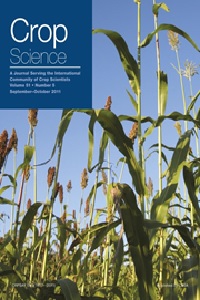Genetic base of irrigated rice in Latin America and the Caribbean 1971 to 1989
The trend to commercially exploit a reduced genetic base in most crops has raised concerns about the possibility of large yield reductions as a result of environmental disturbances. This study describes the genetic base of irrigated rice (Oryza sativa L.) from Latin America and the Caribbean. Schematic pedigrees of 143 cultivars released between 1971 and 1989 were constructed, and releases were grouped by the periods 1971 to 1975, 1976 to 1980, 1981 to 1985, and 1986 to 1989. The contribution of landraces was estimated by assuming they provided 50% of their genes in each single cross. Total contribution was calculated by summing within and across pedigrees and expressed as percentage. Genetic diversity for the 1987‖1988 crop was estimated by weighting contribution by area planted. Coefficients of parentage. (r) among cultivars and among the parents of cultivars developed the Colombian program were calculated. A total of 101 different landraces contributed to the genetic composition of the cultivars released. Number of landraces per period was proportional to the number of cultivars released. A group of 14 ancient cultivars contributed to at least one cultivar during the four periods considered, accounting for nearly 70% of the genes and contributing to an increased relationship among parents of cultivars. This group can be considered as the genetic core of irrigated rice in the region. The major landraces in the core were ‘Cina’, ‘Lati Sail’, and ‘Dee Geo Woo Gen’, mainly introduced to the region through ‘IR8’. An additional group of eight landraces was incorporated into the core after 1975, primarily to incorporate disease resistance. Mean coefficient of parentage within countries varied from r = 0.41 in Costa Rica to 0.00 in Chile. Cultivars from Argentina, Chile, Guyana, and Surinam often showed r < 0.05 with materials from other countries. Genetic variability has been broadened, combining different genes with the genetic core as needed. The identification of new genetic cores to reduce vulnerability while increasing yield potential should be considered.

